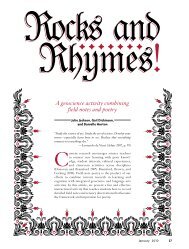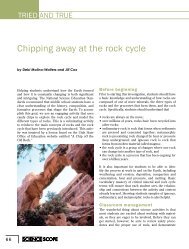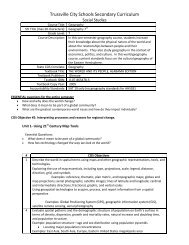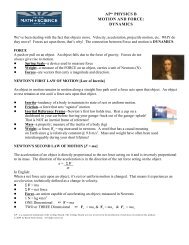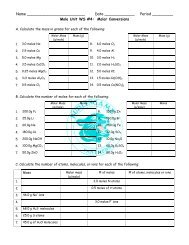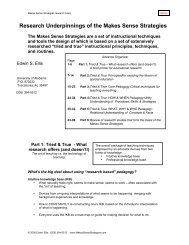The Pet Rock Project - NSTA Learning Center
The Pet Rock Project - NSTA Learning Center
The Pet Rock Project - NSTA Learning Center
You also want an ePaper? Increase the reach of your titles
YUMPU automatically turns print PDFs into web optimized ePapers that Google loves.
SCIENCE SAMPLER<br />
FIGURE 3<br />
One student participating in the <strong>Pet</strong> <strong>Rock</strong> <strong>Project</strong> chose a common piece of Mississippianage<br />
chert as her adopted rock. Modifications include the addition of cardboard legs, tail, and<br />
head to create a camel.<br />
A. B.<br />
photos courtesy of the authors<br />
FIGURE 4<br />
“Slick,” a piece of obsidian, was<br />
personalized with the addition<br />
of formal attire<br />
Discussion and findings<br />
We were pleasantly surprised and impressed by the variety<br />
of <strong>Pet</strong> <strong>Rock</strong> <strong>Project</strong>s that we received. Most of the rocks<br />
students submitted were samples of chert gravel, used<br />
locally to build roads. However, many students creatively<br />
embellished their rocks, or added props or features<br />
(Figure 3), and some of the pet rocks submitted were<br />
collected by students outside of the state (Figure 4).<br />
One of our favorite submissions was scoria, a<br />
volcanic rock often used for landscaping. <strong>The</strong> student<br />
named her rock “Dat” (Figure 5) in honor of the New<br />
Orleans Saints, and creatively relayed the story of how<br />
this “football rock” could be transformed into other<br />
rock types (Figure 6). Although the student incorrectly<br />
identified her rock as pumice, the stor y reveals<br />
incredible creativity as well as an understanding of<br />
the internal and external processes that operate on<br />
the surface of and within Earth.<br />
Student-created rock cycles also exhibited<br />
understanding of the interrelatedness of igneous,<br />
sedimentary, and metamorphic rocks. Some students<br />
produced their rock-cycle diagrams by drawing, some<br />
students created rock-cycle diagrams electronically, and<br />
some students fashioned rock-cycle diagrams with shape<br />
cut-outs. Three examples of student rock cycle diagrams<br />
are presented in Figure 7.<br />
6 2 SCIENCE SCOPE



